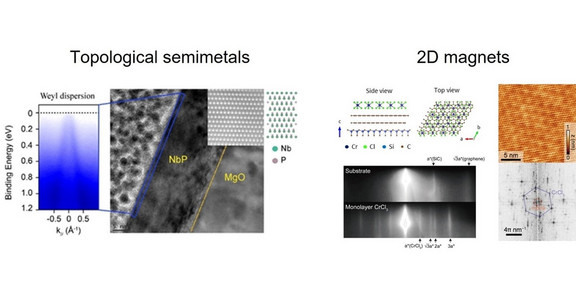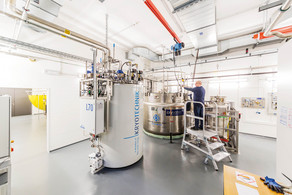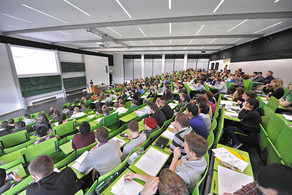Topological and 2D materials grown by molecular-beam epitaxy
- Kolloquium

Topological and 2D materials grown by molecular-beam epitaxy: Synthesis and applications from the ultra-high vacuum perspective
In this talk, I will discuss how ultra-high-vacuum synthesis allows the realization of fertile experimental platforms to understand and exploit exotic material systems, such as topological semimetals and two-dimensional magnets. It represents my core research over the last years, and the expertise that I am bringing to Dortmund within the Ulrich Bonse visiting chair program.
In the first part, I will present the long-sought thin film realization of a Weyl Semimetal [1], a recently discovered topological material class featuring a linear electronic band dispersion – known as the three-dimensional analogue of graphene. In particular, I will discuss how topology and electronic structure are linked to epitaxy-dependent parameters such as strain, doping and surface termination [2]. With a careful preparation of in-situ heterostructures, a practical use of topological properties will be showcased for applications in spin-orbitronics.
In the second part, I will focus on the van-der-Waals epitaxy of a two-dimensional magnet, a CrCl3 monolayer grown on Graphene/6H-SiC(0001). In-situ X-ray magnetic circular dichroism studies reveal intrinsic ferromagnetic order with easy-plane anisotropy and a 2D-XY magnetic universality class [3] in this quasi-freestanding large-area monolayer magnet. The important role of the van der Waals substrate interaction and the underlying crystal symmetry to achieve this rather unsual magnetic behaviour will be discussed, thereby highlighting routes on how to control the anisotropy of 2D magnets via growth engineering. Finally, taking advantage of our all-in-situ approach, perspectives to interface 2D magnets with other functional 2D materials (ferroelectric, photoelastic) as well as with molecular systems, will be outlined to study emerging collective phenomena and resulting functionalities in hybrid heterostructures.
References
[1] Bedoya-Pinto, et.al. Realization of epitaxial NbP and TaP Weyl Semimetal thin films. ACS Nano, 14, 4405-4413 (2020)
[2] Bedoya-Pinto, et.al. Large Fermi-energy shift and suppression of trivial surface states in Weyl Semimetal thin films. Advanced Materials 33 (21), 2008634 (2021)
[3] Bedoya-Pinto, et.al. Intrinsic 2D-XY ferromagnetism in a van der Waals monolayer. Science 374 (6567), 616-620 (2021)








